Sound and light energy -> sound
Sound
Sound is a form of energy that is produced by vibrations. These vibrations create waves that travel through mediums such as air, water, or solids. When these waves reach our ears, they are interpreted by our brain as sound.
Properties of Sound
- Frequency: The number of vibrations per second, measured in Hertz (Hz).
- Amplitude: The intensity or loudness of the sound, measured in decibels (dB).
- Pitch: How high or low a sound is, determined by its frequency.
- Wavelength: The distance between two consecutive compressions or rarefactions in a wave.
- Speed: The speed of sound varies depending on the medium it travels through. In air at room temperature, sound travels at approximately 343 meters per second.
How Sound Travels
When an object vibrates, it causes the air particles around it to vibrate as well. These vibrating particles then transmit the sound energy in the form of waves. The waves travel in all directions away from the source of the sound.
How We Hear Sound
Our ears detect sound waves and convert them into electrical signals that are sent to the brain. The brain then interprets these signals as the sounds we hear. The outer ear collects the sound waves, the middle ear amplifies them, and the inner ear converts them into electrical signals.
Study Guide
- What is sound and how is it produced?
- Explain the properties of sound.
- How does sound travel through different mediums?
- Describe the process of hearing sound.
- Give examples of high and low pitch sounds.
- What factors affect the speed of sound?
- Explain how musical instruments produce sound.
Understanding the properties and behavior of sound waves is fundamental to understanding how we experience and interact with the world around us. By mastering the concept of sound, we can better appreciate the role it plays in our daily lives and the broader scientific principles it embodies.
.◂Science Worksheets and Study Guides Fifth Grade. Sound and light energy
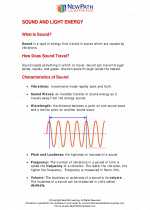
 Activity Lesson
Activity Lesson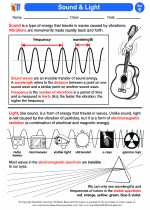
 Worksheet/Answer key
Worksheet/Answer key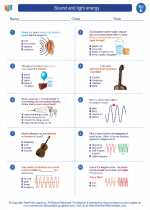
 Worksheet/Answer key
Worksheet/Answer key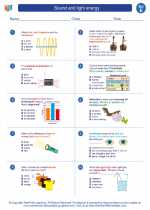
 Worksheet/Answer key
Worksheet/Answer key
 Worksheet/Answer key
Worksheet/Answer key
 Vocabulary/Answer key
Vocabulary/Answer key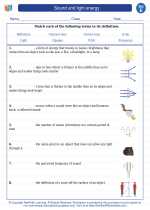
 Vocabulary/Answer key
Vocabulary/Answer key
